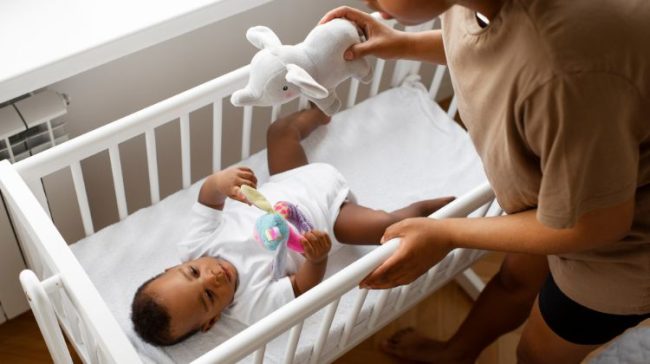Mother’s milk is generally considered the best source of nutrition for newborns, but not all mothers can or choose to breastfeed. In such cases, infant formula serves as a viable alternative, providing essential nutrients necessary for a child’s growth and development. However, the preparation and storage of formula should be approached with caution to minimize the risk of contamination and illness. This article aims to guide you through the safe preparation, use, and storage of infant formula.
Types of Infant Formula
Before diving into the preparation steps, it’s crucial to understand the types of formula available:
- Cow’s Milk-Based Formula: The most common type, suitable for most infants.
- Soy-Based Formula: For infants intolerant to lactose or families seeking plant-based options.
- Hypoallergenic Formula: Recommended for infants with allergies or intolerances to cow’s milk or soy.
- Specialized Formula: Tailored for preemies or infants with specific medical conditions.
Preparation Essentials
Supplies Needed
- Infant formula (powder, liquid concentrate, or ready-to-feed)
- Sterilized bottles, nipples, and bottle caps
- Bottle warmer or a bowl of warm water (optional)
- Sterile measuring utensils
- Freshly boiled water, cooled to at least 70°C (160°F)
Preparing the Workspace
Ensure that all surfaces are clean and that you’ve washed your hands thoroughly with soap and water. Sterilize all feeding equipment, including bottles, nipples, and measuring utensils.
Preparing Infant Formula: Step-by-Step Preparation Guide
Powdered Formula
- Boil Water: Always use freshly boiled water, even if using bottled or purified water. Cool it to at least 70°C (160°F).
- Measure Water: Pour the required amount of boiled water into the sterilized bottle.
- Add Formula: Using a sterilized scoop, add the correct amount of powdered formula to the water.
- Shake Well: Cap the bottle and shake vigorously until all the powder has dissolved.
- Cool Down: Test the formula on your wrist to ensure it’s lukewarm before feeding.
Liquid Concentrate
- Shake the Can: Ensure the concentrate is well-mixed.
- Pour Concentrate: Measure the required amount of concentrate into a sterilized bottle.
- Add Water: Pour an equal amount of boiled water that has cooled to at least 70°C (160°F) into the bottle.
- Mix: Cap and shake the bottle until well mixed.
- Temperature Check: Always test before feeding.
Ready-to-Feed
- Shake Well: Shake the bottle or can of ready-to-feed formula.
- Pour Into Sterilized Bottle: Use the formula directly, without adding any water or other substances.
- Temperature Check: Warm if necessary and always test before feeding.
Dos and Don’ts
Dos
- Always read and follow the manufacturer’s instructions.
- Use freshly boiled water for mixing formula.
- Discard any formula left in the bottle after feeding.
Don’ts
- Never use expired formula.
- Avoid using a microwave to heat the formula, as it can create hot spots.
- Never dilute or concentrate the formula unless advised by a healthcare professional.
Infant Feeding Formula Storage Guidelines
- Powdered Formula: Store unopened cans in a cool, dry place. Once opened, seal the can tightly and use it within one month.
- Liquid Concentrate: Store unopened cans in a cool, dry place and use by the expiry date. Once opened, refrigerate and use within 48 hours.
- Ready-to-Feed: Store unopened bottles in a cool, dry place. Once opened, refrigerate and use within 48 hours.
Feeding and Scheduling
It’s important to consult your pediatrician about how much and how often to feed your baby, as feeding requirements change with age and development.
Signs of Contamination
Be cautious about signs such as:
- Foul smell from the formula or bottle
- Separation of ingredients even after shaking
- Baby showing signs of discomfort, diarrhea, or vomiting after feeding.
Frequently Asked Questions (FAQs)
1. How long can you keep infant formula once made up?
Once mixed, infant formula should be consumed immediately or stored in the refrigerator for up to 24 hours. If it remains at room temperature for more than one to two hours, it’s best to discard it to minimize the risk of bacterial growth. Never store partially consumed bottles of formula for later use, as bacteria from the baby’s mouth can contaminate the remaining formula. Always check with your healthcare provider for specific recommendations tailored to your baby’s needs.
2. What is the quantity of formula milk for a 0-6 months baby?
The amount of formula your baby needs can vary based on individual needs, weight, and age. Generally speaking, babies aged 0-6 months may consume between 2 to 4 ounces (60-120 ml) per feeding during the first few weeks, gradually increasing to 4 to 6 ounces (120-180 ml) per feeding by the end of the first month.
By 4 to 6 months, this may increase to 6 to 8 ounces (180-240 ml) per feeding. However, these are general guidelines, and it’s crucial to consult your pediatrician for personalized advice tailored to your baby’s specific needs, growth rate, and developmental stage.
Feedings may occur roughly every 2-4 hours for newborns and may start to stretch longer as the baby grows. Always look for cues from your baby, such as turning away from the bottle or showing signs of fullness, to determine if you’re feeding the right amount.
3. How long is a warmed formula bottle good for?
Once you’ve warmed a bottle of formula, aim to use it within one to two hours. If the warmed formula bottle has been partially consumed, it should be discarded and not stored for later use, as bacteria from the baby’s mouth can contaminate the bottle. Never reheat a bottle of formula that has already been warmed. If the warmed formula has been at room temperature for more than an hour or stored in the refrigerator for more than 24 hours, it is best to discard it to minimize the risk of bacterial growth.
4. Is it good to give your baby a prepared formula after 2 hours?
If a prepared formula bottle has been sitting at room temperature for more than one to two hours, it’s typically recommended to discard it to prevent the risk of bacterial contamination. Bacteria can multiply rapidly at room temperature. If the formula has been in a cooler environment or refrigerated, it may be safe for use within a 24-hour period. However, if the bottle has been partially consumed, it should not be used beyond the immediate feeding due to potential contamination from the baby’s mouth.
5. How long does a formula bottle last at room temperature?
A prepared formula bottle should not be left at room temperature for more than one to two hours. Beyond this time frame, the risk of bacterial contamination significantly increases. Discard any formula that has been out longer to ensure your baby’s safety.
Final Thoughts
Infant formula is a safe alternative to breast milk when prepared and stored correctly. Always consult your healthcare provider for personalized advice. Following proper hygiene, accurate measurements, and adhering to storage guidelines will ensure that your baby gets the nutrition they need without the risk of illness or discomfort.



